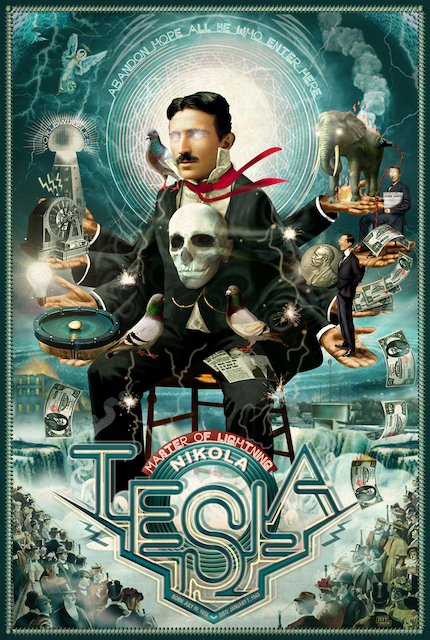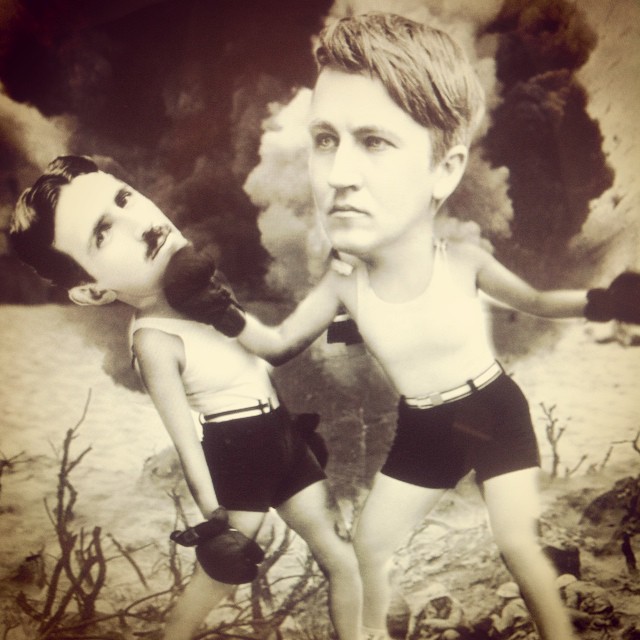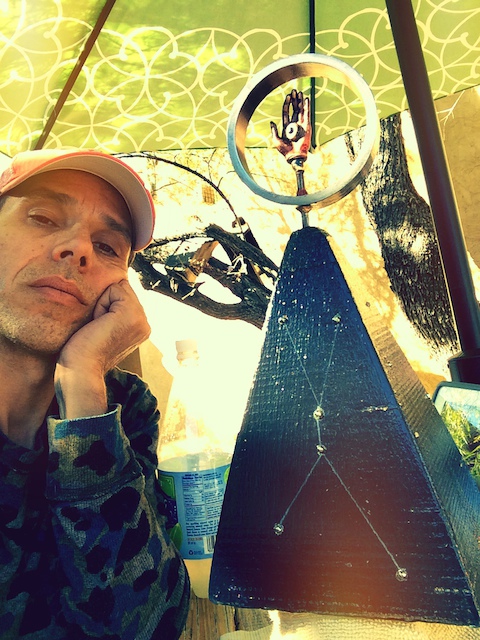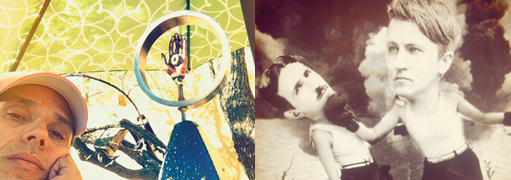Halloween has come and gone, leaving a few remaining candy corns and a throbbing sugar hangover in its wake. But don’t despair. Val Hollingsworth, photographer, gallery co-director (when she’s not working at the Alibi) and the organizer of the upcoming Tesla show, has announced that at the opening reception on Friday, Nov. 14, “Steampunk costumes are encouraged.” So run up to the attic and throw open that dust-covered trunk full of tight leather corsets, padded goggles, high-heeled boots and top hats. It’s time to celebrate one of the 19th century’s most creative, incisive innovators. Nikola Tesla was a cutting-edge magical wizard, a creative genius and the ultimate mad scientist. As a technological visionary during an age when most people still drove their horses to work, he paved the way for remote control, X-rays, guided missiles and neon and fluorescent lighting, among other modern wonders, and set the stage for the way we produce and consume electricity today. At the center of Tesla, Jeff Drew’s action-packed collage serves as a rich visual rendering of the inventor’s life. Drew’s piece envisions this electricity showman—or “Master of Lightning”—as a many-limbed Hindu god holding various tokens that mark different stops in his lifeline, everything from a glowing light bulb to a machine sizzling with bolts of electricity to a well-dressed patron. Another piece in the upcoming show—Bradford Erickson’s photo collage and montage—reveals what Erickson describes as the “tenuous relationship between Tesla and [Thomas] Edison.” Tenuous indeed, because the perfector of the incandescent bulb is “knocking young Tesla’s lights out.” The two skinny scientists, clad in old-timey belted shorts and wifebeaters, duke it out with giant cartoonish boxing gloves.Erickson’s take is based on real history. During the “War of Currents” that pitted Edison against Tesla, Edison tried to discredit Tesla’s AC (or “alternating current”) in favor of the DC (or “direct current”) system he backed. The two innovators couldn’t have been more different. Instead of using his imagination and entertaining theories in his mind as Tesla did, Edison used a “one percent inspiration, ninety-nine percent perspiration” method of experimentation, plugging away with brute force to arrive at his results. Jason Errett, a local applied physicist who has a piece in the show, urged me in a recent email interview to compare Tesla’s manner of innovation to that of Steve Jobs and Edison’s experimental style to that of Bill Gates. Both Jobs and Gates “are important contributors to the computer revolution, just as Tesla and Edison were big figures in the early days of electricity, but Jobs had much more of a visionary approach,” Errett said. In this analogy, Tesla wins out against Edison as the romantic figure whose colorful inner life made him a maverick set on reshaping the world. Unfortunately, by the time of his death in 1943, Tesla had sunk into obscurity. But fast-forward 70-odd years—interest in Tesla is on the rise. Why is he such a popular figure these days? W. Bernard Carlson explains in his book Tesla: Inventor of the Electrical Age that Tesla’s passions and interests extended beyond science or the marketplace. “Instead his inventions came from within himself, and through his inventions he sought to order his life and the larger world around him. In this sense Tesla was like an artist or a poet.” It’s no surprise that many artists find in Tesla a kindred soul. On the surface, mosaic artist Kyle Erickson seems to reject Tesla as a fellow creative dreamer. Erickson’s piece in the show—a television set inlaid with stained glass and given the ominous title “The Reaper”—consists of a warning, as Erickson feels that “our society is based so much around technology, due in part to Tesla’s findings.” However, the spirit of this found-object composition is in line with the visionary thrust of Tesla’s work. “Recognizable objects in a sea of colored glass bring the viewer in to more closely examine what is churning beneath the surface and possibly see a recognizable part of themselves,” Erickson said. And isn’t this what Tesla was all about—rejecting a strict diet of cold hard facts and instead seeing ourselves in every invention, every attempt to transcend what is considered possible? Other artists participating in Tesla include Nicole Corazon, who will have both steampunk-inspired jewelry and paintings in the show. Her earrings are made up of choppy circular shapes that resemble the inner parts of a machine, accompanied by dangling bits of color. And Jerry Miller, one of many artists at the show who works with metal, has built what he mysteriously refers to as “a kinetic steampunk sculpture that is 5 feet tall and called ‘Tesla Unplugged.’” Which brings us back to the evening of Nov. 14, the 21 artists showing their work, steampunk costumes and DJ Ken Cornell, who will mix industrial music, Victorian music (the kind played on a Victrola) and possibly even some AC/DC. Come celebrate Tesla and the power of the human imagination, which provided the fuel for his discoveries. The great inventor would have been pleased to be in the company of so many creative spirits.
Tesla opening receptionRuns through Dec. 19Friday, Nov. 14, 5 to 8pmDowntown Contemporary Gallery105 Fourth Street SW261-0075Hours: By appointment only (please call)













